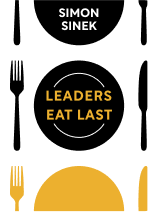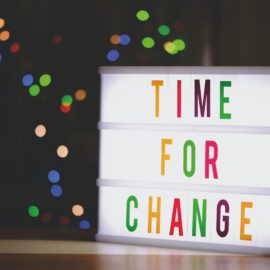

This article is an excerpt from the Shortform book guide to "Leaders Eat Last" by Simon Sinek. Shortform has the world's best summaries and analyses of books you should be reading.
Like this article? Sign up for a free trial here .
What is a “circle of safety” in Sinek’s conceptualization? How do you develop a circle of safety in your organization?
According to Simon Sinek, a “circle of safety” is a company culture where employees’ needs are prioritized above the company’s profits. By putting your employees’ needs first, you create an environment where they feel safe to collaborate and innovate.
Here’s how prioritizing your subordinates’ needs drives collaboration and innovation, according to Sinek.
Why You Should Prioritize Your Subordinates’ Needs
According to Simon Sinek, a “circle of safety”—an environment where employees feel safe and supported by their manager and coworkers—is key to collaboration and innovation. Sinek implies that supporting your subordinates means paying attention to them so you can monitor and fulfill their needs. By prioritizing your subordinates’ needs, you forge what Sinek implies is an empathetic connection with them: You prove that you see them as people, rather than mere assets to increase profits. Thus, your subordinates feel safe because they can trust you to support them and be invested in their success as well as your own.
(Shortform note: Sinek implies that empathy means seeing others as people and that this leads you to invest in those people’s success, but he doesn’t explain why empathy motivates you to do so. Empathy is feeling the impact of a person’s situation as if you were that person. For example, if you’re empathetic toward your subordinate whose grandmother just died, you’ll feel sad and tired just like your subordinate. If you feel the impact of your subordinate’s situation as if you were them, you’ll be invested in their situation and success, working to fulfill their needs because it affects your own emotions.)
Supporting Your Subordinates Encourages Collaboration and Innovation
When your subordinates feel safe and supported, they’re more likely to collaborate and innovate, which makes them more productive. In a supportive environment, your subordinates are comfortable collaborating because they don’t have to compete for your support, Sinek says. This is not the case in unsupportive environments, where support and caring attention are given so rarely (and usually only to those who earn the most profit for the company) that coworkers see each other as rivals for it.
For example, let’s say John is a manager who focuses on creating a supportive environment in which he pays attention to his subordinates and fulfills their needs. John notices that his subordinate Emily is distracted at work. He asks her what’s going on and learns that her children are sick. John offers her paid time off because he knows it’ll make Emily happier and better able to balance her responsibilities as a mother. Rather than only focusing on how Emily can improve company profit, he pays attention to her personal needs and is invested in her success. Because Emily can trust him to pay attention and offer support, she sees her coworkers as partners rather than competitors and helps them succeed as well. This may manifest as deferring credit to a teammate when a project goes well or offering to fulfill a coworker’s responsibilities when they need a sick day.
(Shortform note: Sinek explains that your subordinates will compete for your attention and support but he doesn’t explain why. Experts say this happens because attention and support are essential for human health and well-being. Just as early humans competed for food and shelter, people will compete to fulfill this need as well, destroying collaboration. However, if you meet your subordinates’ needs for attention and support, they’ll subordinates will feel secure enough to share attention and support with other people, leading to stronger relationships, better conflict resolution, and more productive employees.)
Being supportive also makes your subordinates comfortable taking the risks necessary for innovation, Sinek notes: They trust you to support their efforts to improve the company, even if the innovation costs the company some money or doesn’t increase profits right away. In this environment of support and trust, the group can come together as a united whole to face external threats like competitors or shifting markets in innovative ways, ensuring the company’s success.
(Shortform note: When you support your subordinates even when they make mistakes, you encourage “okay-to-fail” thinking. While this may sound counterproductive—after all, you don’t want your subordinates to fail—research shows that this mindset actually results in higher success and innovation. By allowing your employees to fail, you embolden them to experiment and learn, think outside the box, and adapt to new scenarios. One way to encourage this innovative mindset is Google’s 80/20 method, where employees spend 80% of their time on their established workload and devote 20% of their time to experimental projects of their choice. By building innovation directly into their workers’ day, Google ensures it continually improves.)

———End of Preview———
Like what you just read? Read the rest of the world's best book summary and analysis of Simon Sinek's "Leaders Eat Last" at Shortform .
Here's what you'll find in our full Leaders Eat Last summary :
- Why a leader must prioritize her subordinates’ needs above her own
- How empathy and support can be strong managerial tools
- Why you must see your customers, suppliers, and employees as people






